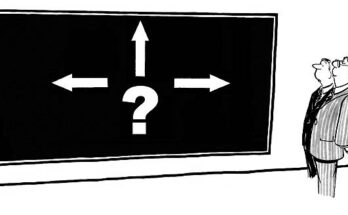The process of creating a new product can be both thrilling and overwhelming. There are a variety of factors to take into account. In this article, we’ll outline the seven actions that product teams should take to ensure a quick and effective development process. There are various stages of product’s development.
 (Photo from istock)
(Photo from istock)
Stages in the process of product’s development
You must comprehend what your customers want in order to create products that will meet both their demands today and those of the future. There may be a lot to process.
Because of this, there are numerous distinct stages in the creation of a product. You know you can’t just go in without a plan? To help you understand better, we will go into more detail about the various product development stages in this blog post.
Coming-up with new ideas for products development
When it comes to creating a new product, there is only one place to start: idea generation. This step of the process entails coming up with a variety of concepts and recommendations for either brand-new products or ways to improve an existing one.
During this phase, businesses will conduct extensive user and customer research, look at market trends, and evaluate their users’ demands. This preliminary work is crucial in order to create a product that can solve an issue that people are currently experiencing. You can approach coming up with fresh ideas in one of two ways:
- Internal idea generation – Internal ideas can emerge from a variety of departments inside your company, such as the technical division, sales team, and customer service.
- External ideas generation – External ideas are derived from outside sources, such as examining the competition or collecting input from your target market.
Examine your ideas
Now that you have developed some ideas, you need to screen them so that you only concentrate on the ones that have the best possibility of succeeding.
Numerous various elements will determine which ideas you should pursue and which ones you should abandon. Along with technical viability, the most important product changes, and the anticipated advantages for your customers, you must think about the marketing potential of your new product.
It is ideal to carry out this step of the product development process within your company. Experts from different teams can help with aspects like evaluating your idea’s marketability, the resources needed, and the technological needs.
There are many various things you need to consider while screening a product. For instance, you must determine the risks involved in creating the product in issue and determine whether it is possible. Think about the limitations. Is the product concept in line with any resource or financial restrictions you may be dealing with?
You should also consider the product hypotheses. The fact that businesses have chosen to move forward with an idea based on false assumptions means that many products are doomed before they even get off the ground.
Concept creation and evaluation is important for product’s development
An idea must be turned into a concept after it has passed the screening stage. Essentially, this is a thorough explanation of the item.
What should your notion contain?
- The product’s target market
- The suggested retail price for the good
- The advantages of the goods
- The characteristics of the product and how the consumer can find them appealing
- These are only a few of the topics you must address while developing a concept for your product.
You might wish to think about creating two or more unique product concepts. This will enable you to comprehend the ways in which various customer types are drawn to each thought and may enable you to determine what would be most beneficial.
The hard work is not done once your product concepts are put together. You must now put them to the test. Before you commit time and money to their creation, testing your concepts with a group of customers is a great approach to validate your product ideas with people.
Initial marketing
After selecting a concept, you must do a business analysis and create an initial marketing plan in order to determine how the product will be introduced to the market.
Analysing the business for product’s development
Reviewing the product’s profit estimates, anticipated costs, and sales projections are all part of a business study. You can proceed with the development stage of the product if they meet your company’s goals.
Marketing approach
A preliminary marketing plan for your product will also need to be developed. This will serve as a direction for your new product’s positioning, pricing, and promotion. When it comes to determining how appealing the idea is, you will be in a better position once the marketing approach has been created.
For instance, if your target market is females between the ages of 18 and 24, you might want to think about marketing on TikTok since your demographics match. A retired man might not, however, find this appropriate. As a result, the target audience you are trying to reach will have a huge impact on the strategies you choose to use.
It’s time to create your product
The stage of product development has finally been achieved. This entails creating a fully finished, marketable product as well as developing the product concept.
You should have decided on the method of product development you want to use at this point. You can use a variety of approaches, including agile and waterfall product development. Some companies prefer to employ a hybrid method, which combines various aspects of the two.
The next natural move at this stage is to create a prototype. After that, you can test your prototype on actual customers to see how they engage with it and get useful feedback.
Release the merchandise to a test market which will help in maintaining product’s development
 (Photo from istock)
(Photo from istock)
Now that we’re coming close to the release phase, but it’s crucial to exercise a little patience. A crucial step in the process is test marketing. This is releasing the finished product to a sample market so that you can assess how the product performs while using the predetermined marketing approach.
When releasing the product to a test market, there are two testing strategies you can use. These are beta and alpha testing.
During beta testing, actual people get to use the product and provide their frank feedback. Before a product is made available to the public, any problems or issues are found during alpha testing by software.




